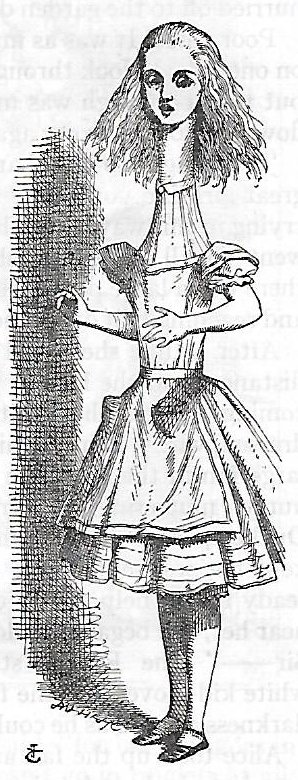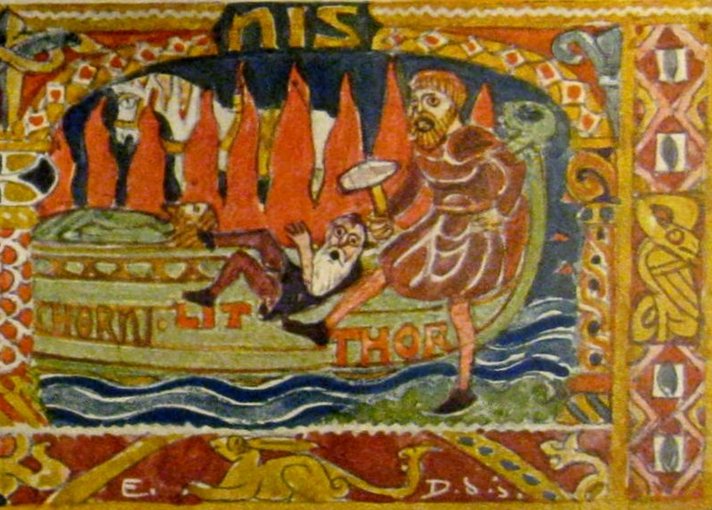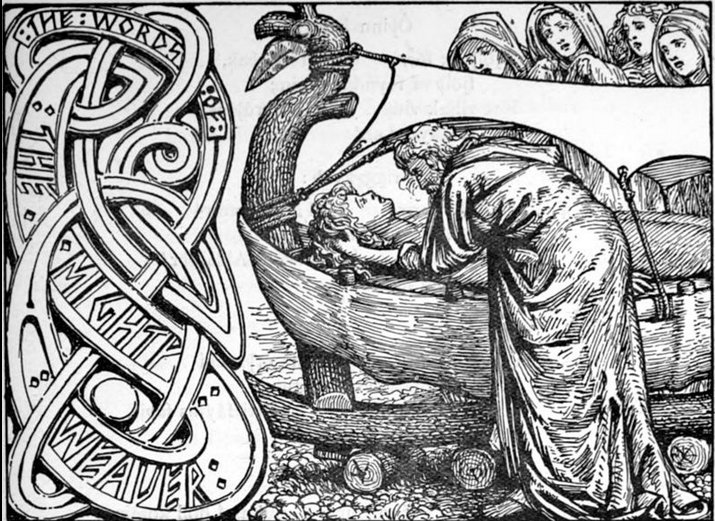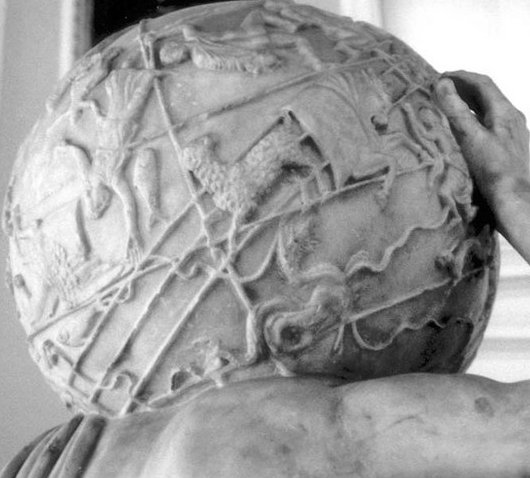207. Once again. The Standard person is very tall as if in order to be in harmony with his staff, and indeed his head seems to break (paxi) the Roof. ... Just at this moment her head struck against the roof of the hall: in fact she was now rather more than nine feet high, and she at once took up the little garden key and hurried off to the garden door ...
Cfr the Chinese 12th station Rooftop at day number 14 * 29½ + 1 = 414 (February 18, 49). .jpg)
Ahead of him - i.e. following after him - there were 6 + 5 figures, which 'happens to' coincide with the difference between 365 and 354. 354 + 6 = 360 and 360 + 5 = 365. In other words, the tall figure handling a reversed ihe tau at the top of his pole could represent day 354 = 12 * 29½. Maybe he corresponded to the Bambo Cutter. And we should here remember that the Pleiades were said to be the Cutters. 
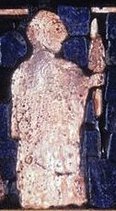 ... A man once said to his careless son: The world is as sharp as a knife. If you don't watch out, you'll fall right off. His son replied that the earth was wide and flat; no one could fall off. And as he kicked at the ground to show how solid and reliable it was, he ran a splinter into his foot and died soon after ... (Sharp as a Knife) 'Whereas, over the next two days, Lono plays the part of the sacrifice. The Makahiki effigy is dismantled and hidden away in a rite watched over by the king's 'living god', Kahoali'i or 'The-Companion-of-the-King', the one who is also known as 'Death-is-Near' (Koke-na-make). Close kinsman of the king as his ceremonial double, Kahoali'i swallows the eye of the victim in ceremonies of human sacrifice (condensed symbolic trace of the cannibalistic 'stranger-king').' (Islands of History) The Little (Litr) guy (dwarf) 4 places earlier could then represent day 354 - 4 = 350. But possiby the whole scene from the beginning of the top line envisions day 349 + 1 (→ 50 * 7).
... According to Gylfaginning, following the murder of Baldr by Loki, the other gods brought his body down to the sea and laid him to rest on the ship. They would have launched it out into the water and kindled a funeral pyre for Baldr but were unable to move the great vessel without the help of the giantess Hyrrokkin, who was sent for out of Jötunheim. She then flung the ship so violently down the rollers at the first push that flames appeared and the earth trembled ... Similar to how 36 (360 / 10) could be mirrored into 63 (9 weeks) number 350 (50 weeks) could be reversed into 53 (Terminalia). However, maybe we should rather count the Standard person as number 54 (→ 2 * 27 → 22 / 7 = π), implicating that figure number 50 should end with the little guy under the horse noses, presumably corresponding to a fraction of a day. When 4 is inverted it becomes ¼ as in the difference between the the length of the Julian year and 365 days.
Perhaps the chariot was invented when a ship had to be drawn a long distance on firm ground between the waters. The ship for the dead Balder seems to illustrate the idea:
... After all the food supplies had been brought on land [i oti era te kai te too mai ki uta], the two rulers [te ariki arurua], the king and the queen said, 'Drag the canoes on land and take them apart (so the wood can be used) to build houses and cover the roofs!' They dragged the two canoes on land and took them apart. After they had finished disassembling the canoes, Nuku [Kehu] covered all the houses ... [E:84] It sounds as if the star name Al Baldah corresponded to the god Balder:
According to Hevelius and his wife the position of Al Baldah (π) was at the occiput (Teke) of Sagittarius (Pabilsag): Teke. Occiput. Teketeke, short (not tall); also: teke. Vanaga. Teke ki nei, as far as, until (? tehe 1). Teketeke, crest, ridge. Churchill. Teke and Maeha were 'brothers', located at opposite sides of 'the house'. [E:62]
|
||||||||||||||||||||||||||||||||||||||||||||||||||||||||||||||||||||||||||||||||||||||||||||||||||||||||||||||||||||||||||||||||||||||||||||||||||||||||||||||||||||||||||||||||||||||||||||
